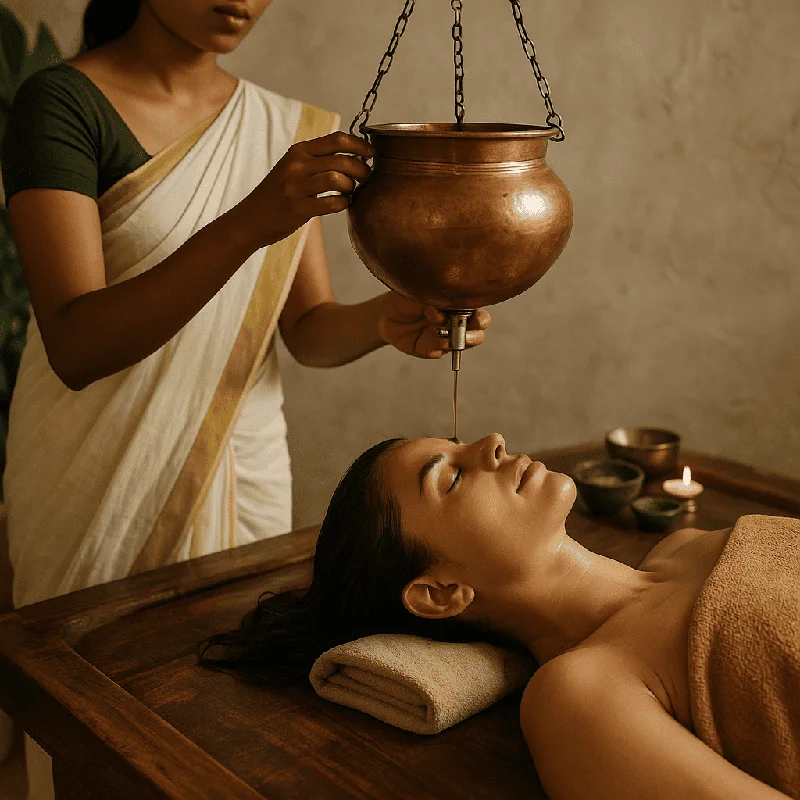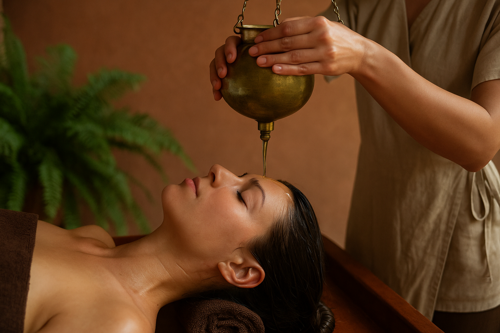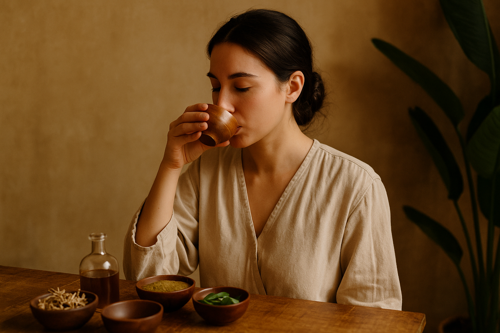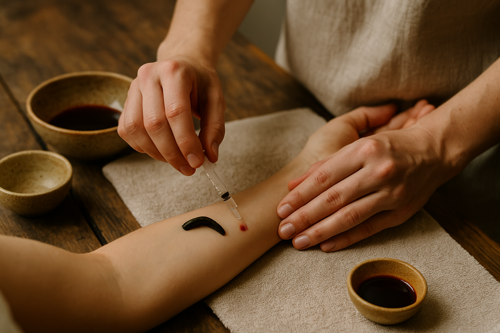Ask Ayurvedic doctor a question and get a consultation online on the problem of your concern in a free or paid mode. More than 2,000 experienced doctors work and wait for your questions on our site and help users to solve their health problems every day.
Shop Now in Our Store
Panchakarma Cleanse: Ayurvedic Detox and Rejuvenation

If you've been feeling heavy, foggy, maybe just... off, you're definitely not alone. It’s wild how modern life pulls us out of balance without us even noticing until one day we wake up thinking, something's not right. That's actually how I stumbled into the world of Ayurveda, and more specifically, the incredible practice of a panchakarma cleanse.
Now, you might have heard whispers about it in yoga studios or seen it floating around Instagram — usually some idyllic retreat in Kerala. But trust me, ayurvedic panchakarma cleanse is more than a wellness trend. It’s deep, ancient healing. It's a reset for your entire system — body, mind, spirit.
And while it sounds super exotic (and sometimes intimidating), once you understand the basics, panchakarma becomes way more approachable — even doable from your own home, if you know what you're doing. Yep, panchakarma at home is a thing too. Let’s break it down properly.
What Is a Panchakarma Cleanse?
Okay, first things first — what is a panchakarma cleanse?
In simple terms, it’s an intense ayurvedic detox panchakarma designed to purify the body, eliminate toxins (what Ayurveda calls ama), and bring your doshas — Vata, Pitta, and Kapha — back into harmony.
The word "Panchakarma" literally means "five actions" in Sanskrit. These are five therapeutic procedures that systematically clean your body from the inside out. It’s kind of like giving your internal engine a full-service tune-up rather than just topping off the oil.
And it’s not a one-size-fits-all thing. True panchakarma ayurvedic treatment is always personalized based on your body constitution (your prakriti), current imbalance (your vikriti), your digestion strength, emotional state... even the season matters.
One important thing: Panchakarma treatments aren't just about detox. They’re about rejuvenation. In fact, a good ayurveda panchakarma therapy doesn’t just leave you squeaky clean — it rebuilds your tissues (dhatus), boosts your vitality (ojas), and renews your zest for life. Big promises, but honestly, real ones if you do it right.

The Five Panchakarma Therapies
This is where it gets a little technical — but stick with me because it’s fascinating. Panchakarma therapy isn’t a random set of spa treatments. Each of the five core therapies has a purpose, and they work synergistically.
Vamana – therapeutic emesis
Alright, "emesis" is just a fancy word for therapeutic vomiting. And yeah, it sounds intense. But Vamana is actually a controlled and purposeful way to expel deep-rooted Kapha toxins from the respiratory and digestive tract. Think of it like emptying a stagnant pond to let fresh water in.
Virechana – purgation therapy
This one’s a little more... digestible (pun intended). Virechana uses herbal laxatives or medicated ghee to encourage thorough cleansing of the intestines and liver. It's especially great for Pitta types — the fiery folks among us — because it cools and soothes the system.
Basti – enema detox
If you’ve heard anything about Ayurveda, you’ve probably heard about basti. Medicated oil or herbal decoctions are administered rectally to deeply nourish and cleanse the colon. It’s often said that "Basti is half of Panchakarma" — that's how important it is.
Nasya – nasal cleansing
Ever felt like your head was stuffed with cotton? Nasya therapy involves applying medicated oils or powders into the nasal passages to clear the sinuses, enhance mental clarity, and even sharpen your senses. Sounds simple, but it's incredibly powerful.
Raktamokshana – bloodletting therapy
Okay, this one's not super common anymore unless you're visiting very traditional centers. Raktamokshana involves the controlled removal of small amounts of blood to eliminate deep-seated toxins. It’s mainly used for specific conditions like chronic skin diseases or inflammatory disorders.

The Panchakarma Cleanse Experience
So, what actually happens when you sign up for a panchakarma treatment? Spoiler alert: it’s way more than just drinking green juices and chilling in a sauna. A legit ayurveda panchakarma therapy is deeply structured, thoughtful, and honestly kind of a journey into yourself.
And yes, it can be luxurious if you go for the best ayurvedic panchakarma treatment in India — there are stunning places like Vaidyagrama or Somatheeram — but even then, it’s still pretty intense! It’s real work: emotional, physical, and even spiritual.
Consultation and personalized plan
First, you’ll meet with an Ayurvedic doctor (Vaidya). They’ll check your pulse, tongue, skin, eyes — even ask about your dreams, digestion, cravings, all of it. I remember feeling super weird the first time someone asked me about the color of my bowel movements. But that's just Ayurveda being thorough.
From there, they design your panchakarma cleanse specifically for you. Maybe you need more basti and less vamana. Maybe you're too weak for full detox and need a gentler build-up phase first (this happened to me, actually). The whole idea is customization. Ayurveda treats you, not the disease.
Typical duration and what to expect
You’re not just popping in for an afternoon. A proper ayurvedic panchakarma cleanse usually takes around 21 days — broken into three phases: Purva Karma (preparation), Pradhana Karma (main therapies), and Paschat Karma (rejuvenation).
If you can’t swing 21 days, some centers offer 7- or 14-day versions. But honestly, the longer the better — your body needs time to open up, release, and heal.
You might spend your days getting oil massages (Abhyanga), sweating in herbal steam chambers (Swedana), undergoing nasal therapies (Nasya), drinking medicated ghee (yes, it’s a thing), meditating, eating super-simple foods like kitchari, and resting — so much resting.
And emotionally? It can be a rollercoaster. I cried for no reason on Day 6, then felt euphoric on Day 8. It’s like all the old stuff your body’s been holding onto — not just physical toxins, but grief, anger, fear — finally gets permission to leave.
Benefits of Ayurvedic Panchakarma Cleanse
Not to be dramatic, but a panchakarma ayurvedic treatment can be life-changing if you surrender to the process. I went in for digestion issues and came out feeling like someone had rewired my whole system.
Deep detoxification and dosha balance
Unlike trendy "detoxes" that focus on surface-level stuff (no offense, juice cleanses), ayurveda panchakarma goes straight to the root. It clears ama (toxic buildup) from your tissues, blood, joints, and gut — places regular cleanses can’t even touch.
And balancing your doshas? You might not even realize how wildly out of whack you are until you feel what balance actually is. It's like someone turned the static off inside your body.
Improved digestion, vitality, and mental clarity
Your digestion (agni) is king in Ayurveda. If your digestion is strong, your whole health foundation is solid. After panchakarma therapy, you feel lighter, stronger, and sharper. Brain fog clears. Food starts actually nourishing you instead of making you feel bloated and tired.
Honestly, I didn’t realize how much mental noise I was carrying until it went away.
Emotional release and inner calm
Here’s something they don't hype enough: the emotional detox. Seriously, old sadness, buried anger, suppressed fear — it all comes up during a panchakarma cleanse. And while that sounds scary (and sometimes it is messy), it’s ultimately so freeing.
It’s like your body had little trapped pockets of unprocessed emotion, and the therapies loosen them up and let them out. It's not just about purging physical junk; it’s about clearing out emotional gunk too.

Can You Do a Panchakarma Cleanse at Home?
Alright, big question: can you actually DIY a panchakarma cleanse at home?
Short answer — kind of, but with some caveats.
A full-blown, traditional ayurvedic panchakarma cleanse needs an expert guiding you. You’re working with potent therapies, strong herbs, and deep emotional/physical shifts. But, there are lighter, safer versions you can do at home if you’re smart and careful.
Think of it like this: a full panchakarma is like major surgery (okay, maybe that's a little dramatic, but stay with me), and a panchakarma at home is more like a deep spring cleaning.
A home version might include:
-
Eating a super-simple, easy-to-digest diet (hello, kitchari)
-
Oil massages (Abhyanga) with warm sesame oil
-
Gentle herbal cleansing teas
-
Triphala at night for digestion support
-
Nasya oil drops for nasal detox
-
Lots of rest, meditation, and journaling
Some people also do short "ghee drinking" protocols at home, but I wouldn't recommend that without a Vaidya supervising. Trust me, drinking too much medicated ghee without proper prep can wreck your digestion for weeks. Learned that the hard way. 😅
Bottom line: if you’re curious but can’t get to an Ayurvedic center, start small. Respect your body’s limits. And if you want to go deep, definitely work with an Ayurvedic doctor.
Conclusion
If you're even thinking about a panchakarma cleanse, take that as a little nudge from your inner self saying, hey, we could feel a lot better than this.
Whether you dive into a full professional panchakarma treatment, test a mini panchakarma at home, or just start weaving more Ayurvedic habits into your day, it’s all part of the same beautiful path back to balance.
Honestly, in a world that constantly encourages us to push harder, go faster, do more — choosing to slow down and listen to your body’s ancient wisdom? That’s radical self-love.
If you feel called, trust that calling. Find a practitioner you vibe with. Ask lots of questions. And most of all, give yourself time. Deep healing doesn't happen overnight — but it does happen.
FAQs
What do you eat during Panchakarma?
Mostly simple, digestible foods like kitchari (a mung bean and rice porridge), cooked veggies, warm herbal teas, and sometimes medicated buttermilk. The goal is to lighten your digestion so your body can focus on detox and healing.
Does Panchakarma really work?
Honestly? If it’s done properly and you commit to the process, yes, it absolutely works. It’s not magic — it's deep biological reset grounded in thousands of years of Ayurvedic science. But results vary depending on how thorough and personalized your treatment is.
Who should not do Panchakarma?
People who are extremely weak, pregnant women, children, and individuals with certain acute illnesses shouldn’t jump into a full panchakarma. Always consult an experienced Ayurvedic doctor before starting, especially if you have any serious health conditions.
What are the signs that Panchakarma is working?
You might notice lighter digestion, brighter skin, clearer thinking, better sleep, and a general feeling of emotional "clearing out." Sometimes, there’s an initial phase where you feel worse (headaches, fatigue, emotional ups and downs), but that’s part of the cleansing.
References
-
National Center for Complementary and Integrative Health (NCCIH) -
The Ayurvedic Institute -
Ministry of AYUSH, Government of India -
Kerala Ayurveda Academy
This article is checked by the current qualified Dr Sujal Patil and can be considered a reliable source of information for users of the site.

